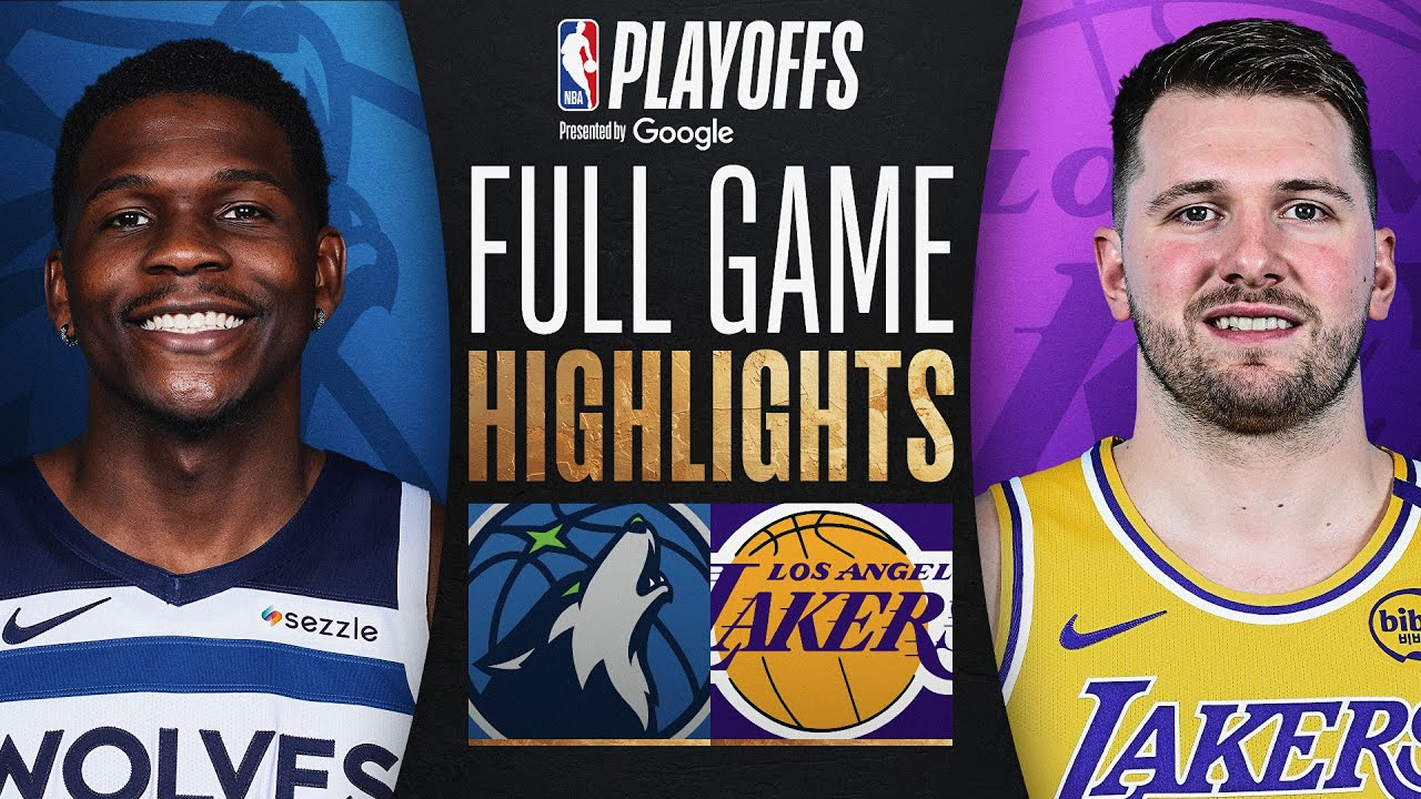The NBA showdown between the Los Angeles Lakers and the Minnesota Timberwolves was more than just a regular season or playoff contest — it was a collision of two contrasting basketball ideologies. On one side stood the star-studded Lakers, led by icons like LeBron James and Luka Dončić. On the other side, a gritty and cohesive Timberwolves squad powered by Anthony Edwards, Rudy Gobert, and a deep supporting cast.
As the dust settled, the Timberwolves emerged victorious, showcasing why depth, defense, and teamwork often triumph over individual brilliance. This article breaks down each team’s performance, top player statistics, and the strategic elements that defined the matchup.
🔥 Game Overview: Timberwolves Overpower Lakers
The Timberwolves took command of the series early and never looked back. Their ability to control the tempo, dominate inside the paint, and clamp down defensively in the clutch was too much for the Lakers to overcome.
Final Series Outcome: Timberwolves win 4–1
Biggest Victory Margin: Timberwolves by 18 points (Game 3)
Average Rebounds per Game: Timberwolves 48.1 – Lakers 39.4
Fast Break Points per Game: Timberwolves 14.6 – Lakers 9.2
From start to finish, Minnesota executed their game plan with clinical precision.
🧮 Minnesota Timberwolves Player Stats & Impact
Anthony Edwards – SG
Points per Game: 27.2
Rebounds per Game: 6.0
Assists per Game: 5.4
Steals per Game: 1.6
Anthony Edwards was the emotional and statistical leader for Minnesota. His aggressive drives, perimeter shooting, and lockdown defense set the tone for the series.
Rudy Gobert – C
Points per Game: 13.6
Rebounds per Game: 16.2
Blocks per Game: 2.9
Gobert anchored the defense and was nearly impossible to keep off the glass. His 25+ rebound performance in Game 5 became the signature moment of the series.
Jaden McDaniels – SF
Points per Game: 12.4
Defensive Rating: Among the best in the series
McDaniels proved essential in limiting LeBron’s offensive rhythm, using length and speed to pressure without fouling.
Julius Randle – PF
Points per Game: 21.8
Rebounds per Game: 8.3
A midseason acquisition who made a massive difference. Randle punished smaller Lakers defenders in the paint and helped stretch the floor.
Bench Unit: Naz Reid, Kyle Anderson, Nickeil Alexander-Walker
Together, they averaged 31 points per game off the bench. Their collective energy shifted momentum in every game, particularly Games 2 and 4.
🎯 Los Angeles Lakers Player Stats & Struggles
Luka Dončić – PG
Points per Game: 29.7
Rebounds per Game: 8.1
Assists per Game: 6.5
Despite strong numbers, Luka struggled under double teams and physical defense. Turnovers and late-game shot selection hurt the Lakers in key moments.
LeBron James – SF
Points per Game: 24.5
Rebounds per Game: 9.0
Assists per Game: 6.0
LeBron displayed brilliance in spurts, but the 39-year-old star couldn’t maintain full dominance. His leadership kept the Lakers competitive, but the lack of a reliable supporting cast was glaring.
D’Angelo Russell – SG
Points per Game: 11.2
Field Goal Percentage: 38%
Russell had an underwhelming series, struggling to make timely shots and contributing little on defense.
Supporting Cast: Jarred Vanderbilt, Rui Hachimura, Austin Reaves
Each showed flashes, but none delivered consistent production. The Lakers’ bench was outscored in every game of the series.
🧠 Key Tactical Takeaways
1. Minnesota’s Defense Was Relentless
Whether it was trapping Dončić at half court or rotating to close out on shooters, the Timberwolves brought playoff-level intensity every possession. They forced an average of 14.8 turnovers per game from Los Angeles.
2. Rebounding Was the Deciding Factor
The Timberwolves controlled the boards in all five games, often giving themselves 2–3 extra possessions per quarter. Gobert and Randle were dominant on both ends.
3. Team Ball Over Hero Ball
The Lakers often relied on isolation plays, especially in crunch time. Meanwhile, Minnesota moved the ball, recording 26.3 assists per game to the Lakers’ 20.4.
4. Fourth Quarter Execution
Minnesota outscored Los Angeles by a staggering +38 in all fourth quarters combined. Clutch defense and smart possessions sealed each win.
🏟️ Pivotal Game: Game 4 Breakdown
Game 4 in Los Angeles was the turning point. Trailing 2–1 in the series, the Lakers had a chance to even it up at home. Instead, Minnesota took control early and never surrendered the lead.
Final Score: Timberwolves 110 – Lakers 97
Top Performers:
Edwards: 29 pts, 7 reb, 6 ast
Gobert: 16 pts, 19 reb
Dončić: 33 pts, 8 reb, 4 ast
LeBron: 18 pts, 5 reb
Despite Luka’s scoring, the Lakers were outshot from deep (38% vs. 27%) and outrebounded by 14. The Timberwolves closed the game on a 15–4 run.
🧩 Team Assessments and Future Outlook
✅ Minnesota Timberwolves
Strengths: Elite defense, rebounding dominance, balanced scoring
Areas to Improve: Three-point consistency in tighter games
Outlook: With Edwards maturing into a top-tier player and Gobert controlling the paint, Minnesota looks like a serious contender going forward.
❌ Los Angeles Lakers
Strengths: Star power, playoff experience
Weaknesses: Depth, interior defense, overreliance on isolation
Outlook: Front office must explore trades or free-agent signings to support LeBron and Luka. Another early playoff exit could signal major offseason changes.
🗣️ Final Word
The Lakers vs Timberwolves series was a powerful reminder of how team basketball continues to win in today’s NBA. While Los Angeles featured more household names, Minnesota played with greater intensity, discipline, and trust in each other. The result? A convincing series win that marks the Timberwolves as a rising force in the West.
For the Lakers, it’s back to the drawing board. As LeBron nears the end of his legendary career and Luka reaches his prime, the team must urgently recalibrate to stay relevant.




